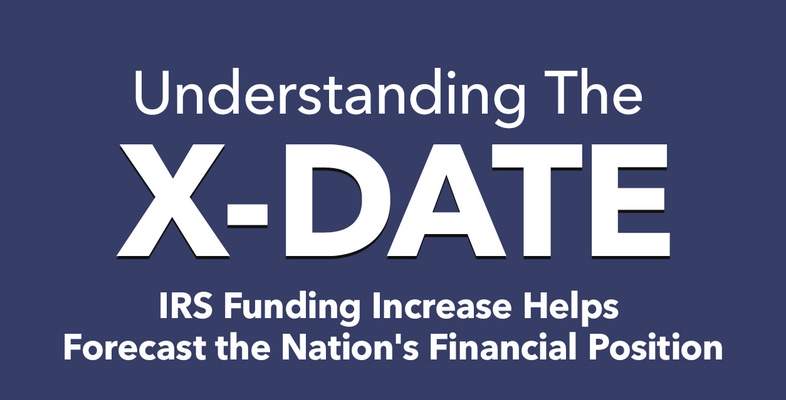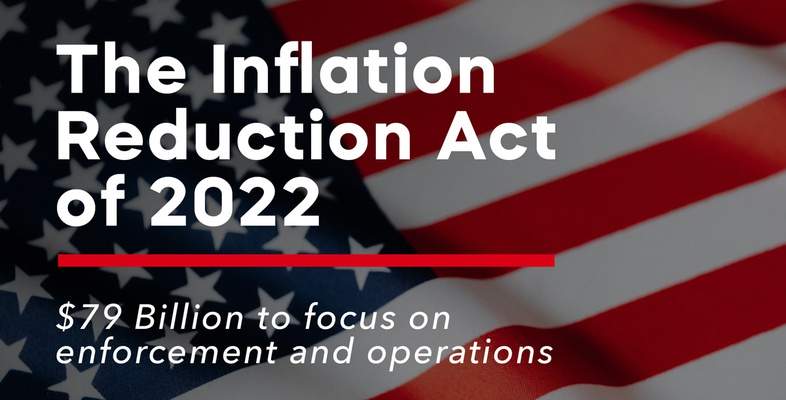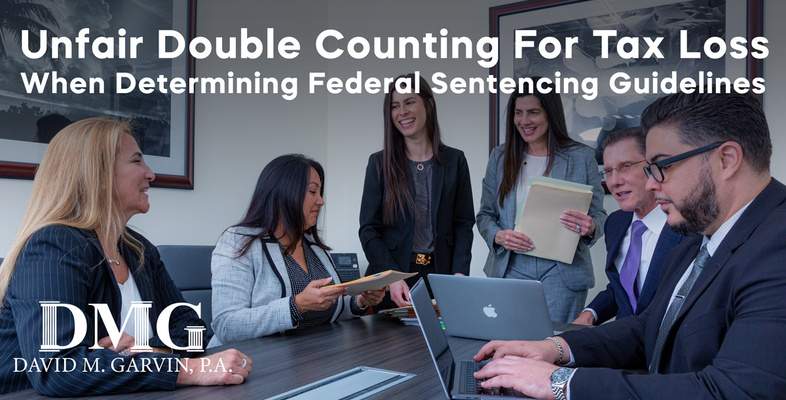United States v. Black, 815 F.3d 1048 ( 7th Cir. 2015)
Opinion
Rex Black repeatedly tried to pay off more than $5 million tax debt with checks drawn on checking accounts that he knew were closed to prevent the IRS from collecting taxes from him.
A jury convicted Black of one count of obstructing and impeding the IRS from collecting taxes and four counts of passing and presenting fictitious financial instruments with intent to defraud.
The court sentenced Black to 71 months in prison.
Black appealed arguing that the district court erred in determining his sentencing range under the United States Sentencing Guidelines ("U.S.S.G."). Black alleges that the sentencing court improperly calculated the tax loss by aggregating the face value of the fraudulent checks.
The appellate court agreed with Black and found that the district court misinterpreted and misapplied the tax loss definition to the facts of this case.
However, the Court also found that, contrary to Black's assertions, that penalties and interest may be included in the tax loss calculation.
Finally the Court held that the district court did not err by failing to consider audit errors and apply available deductions because Black could not establish that he was entitled to any reduction in taxes owed.
Black's sentence was vacated and remanded for re-sentencing.
I. BACKGROUND
In 2000, the IRS conducted an audit of Black's income for tax years 1997 and 1998 (the "2000 Audit"). After the IRS completed the audit, it assessed approximately $3.89 million in taxes, penalties, and interest ($2.2 million in taxes). Black did not pay the amount due.
Beginning in October 2002, the IRS filed a series of liens on various properties owned by Black to secure payment of Black's tax debt. In response to each lien, Black submitted to the IRS a fraudulent check to extinguish the lien and satisfy his tax debt. For example, in October 2002, the IRS filed the first lien to satisfy the tax debt in the amount of $4,856,895.49. That same month, Black submitted a check drawn on a closed account in the full amount to the IRS. This pattern continued.
Between November 2002 and August 2003, the IRS filed liens for $1,467,168.33, $1,417,804.18, and $4,954,049.40, and Black sent the IRS a fraudulent check in the amount of the lien. At some point, the IRS assessed $505,993.68 for additional penalties and interest, and Black sent the IRS a bad check for that amount too.
The government charged Black with one count under 26 U.S.C. § 7212(a) for corruptly obstructing and impeding the IRS in its collection of taxes, penalties, and interest and three counts under 18 U.S.C. § 514(a)(3) for presenting the United States with fictitious instruments with the intent to defraud. The jury found Black guilty of all counts.
The district court determined that the applicable guideline provision was U.S.S.G. § 2T1.1 and found that the offense level under this guideline "is determined on the basis of Black's intended amount of monetary loss to the IRS that was the object of Black's criminal conduct."
The district court also found that the guidelines required him to aggregate the value of the fraudulent documents, so it added the face value of each check Black submitted to the IRS. From this calculation, the district court determined that the tax loss was over $14 million.
This amount included the taxes, penalties, and interest Black owed. Using the U.S.S.G. § 2T4.1 tax loss table, the district court determined that the tax loss applicable to Black's criminal conduct was more than $7 million but less than $20 million. This resulted in a base offense level of 26. At the sentencing hearing, the district court considered the advisory guidelines range along with the factors set forth in 18 U.S.C. § 3553 and sentenced Black to 71 months' imprisonment.
II. ANALYSIS
On appeal, Black attacked the district court's application of U.S.S.G. § 2T1.1. Specifically, he argued that the district court made three errors in calculating the amount of tax loss under U.S.S.G. § 2T1.1: (1) aggregating the face value of the checks and bills of exchange; (2) including penalties and interest; and (3) failing to correct audit errors and apply available deductions. He concludes that these errors resulted in an incorrect base offense level.
When reviewing a sentence, the appellate Court must first check to see if the district court committed a significant procedural error, such as improperly calculating the guidelines range, treating the guidelines as mandatory, or selecting a sentence based on clearly erroneous facts. If the Court determines that no procedural errors occurred, the Court considers whether the sentence is substantively reasonable. United States v. Garcia, 754 F.3d 460, 483 (7th Cir. 2014).
The review the district court's tax loss calculation is the clear error standard. United States v. Williams-Ogletree, 752 F.3d 658, 662 (7th Cir. 2014). "To show clear error a defendant 'must show that the district court's calculation was not only inaccurate but outside the realm of permissible computations.'" Id. (quoting United States v. Al-Shahin, 474 F.3d 941, 950 (7th Cir. 2007)).
A. Definition and Application of Tax Loss
First, Black argues that the district court improperly calculated the tax loss amount by aggregating the amount of each fraudulent check and bill of exchange that he attempted to pass. The government argues that the guidelines required the district court to aggregate the tax loss amount. The Court agreed with Black. However, the error arose in the first instance from the district court's interpretation and misapplication of the tax loss definition to the facts of the case, not from any aggregation principle.
The district court determined that the tax loss amount was more than $7 million but less than $20 million, based on an intended loss amount of over $14 million, which is the cumulative amount of each fraudulent check that Black attempted to pass. This tax loss figure resulted in a base offense level of 26. To arrive at this figure, the district court determined that § 2T1.1(c)(1) provided the applicable definition of tax loss. This guideline states: If the offense involved tax evasion or a fraudulent or false return, statement or other document, the tax loss is the total amount of loss that was the object of the offense (i.e., the loss that would have resulted had the offense been successfully completed). U.S.S.G. § 2T1.1(c)(1) (2013). But using this tax loss definition, the district court's calculation was incorrect.
The Court stated that "[w]e take the phrase 'the object of the offense' to mean that the attempted or intended loss, rather than the actual loss to the government, is the proper basis of the tax-loss figure." United States v. Chavin, 316 F.3d 666, 677 (7th Cir. 2002).
Here, the object of Black's offense was the amount of money that he attempted to avoid paying, which is the actual amount of taxes, penalties, and interest that was due. Black owed the IRS unpaid taxes for 1997 and 1998 plus penalties and interest. The IRS filed a lien to satisfy the tax debt in the amount of $4,856,895.49. Black wrote a bad check in this amount. The IRS notified Black that he owed an additional $505,993.68 in penalties and interest, and Black wrote a bad check for this amount. At that point, Black owed the IRS $5,362,889.17.
The IRS filed three additional liens for $1,467,168.33, $1,417,804.18, and $4,954,049.40—all to collect the same $5.3 million Black owed. Black responded by writing two bad checks to satisfy the tax liens. The district court added the face value of each fraudulent instrument submitted to the IRS to determine the tax loss was over $14 million. Doing so was improper under § 2T1.1. From the record, it appears that the tax loss was only approximately $5.3 million.
Three of Black's relevant convictions were under 18 U.S.C. § 514 for presenting the U.S. government with a check or a bill of exchange with intent to defraud, and the guidelines state that § 2B1.1 is applicable to convictions under 18 U.S.C. § 514.
Under § 2B1.1, in a typical case involving passing fraudulent checks, district courts routinely calculate a general loss amount by adding the value of each check. Here, however, the district court did not choose to proceed under § 2B1.1, which changed the parameters of its tax loss calculation.
All parties agreed that § 2T1.1 was the appropriate guideline in this case. (No party challenged the propriety of using this guideline on appeal.) As a result, the district court proceeded under § 2T1.1. This guideline required the district court to calculate loss by the tax loss the IRS incurred or could have incurred, not the general loss, which the general fraud guideline defines as monetary harm that did result or could have resulted from attempts to pass bad checks.Therefore, under these facts, the tax loss cannot exceed the $5.3 million that the evidence shows Black owed the IRS.
B. Penalties and Interest Should Not Have Been Included in the Tax Loss Calculation.
In its order, the district court stated "[t]he loss Black intended the IRS to suffer had Black's offense been successfully completed included the loss of the penalties and interest Black owed the IRS, as well as the taxes he owed."
The district court included a footnote in its order that stated,
Even though Black's criminal statute of conviction was 26 U.S.C. § 7212(a) not 7201 or 7203, the evidence at trial established beyond a reasonable doubt that the object of Black's criminal conduct in committing the offenses ... was to defraud the IRS by willfully failing to pay and willfully evading his payment of his debt obligations to the IRS, which included the penalties and interest, as well as the taxes that Black owed to the IRS.
The district court included penalties and interest in the tax loss calculation and did so because Black's conduct was similar to conduct criminalized by § 7201 and § 7203.
Black argues that the tax loss calculation under U.S.S.G. § 2T1.1 should not include penalties and interest as part of the tax loss calculation. He specifically argues that penalties and interest should not be included in the tax loss calculation because he was not charged or convicted of willful evasion under 26 U.S.C. § 7201 or willful failure to pay under § 7203.
The government argued that the issue of whether Black's tax loss calculation included penalties and interest is not properly before the court because the district court based the tax loss amount on the face value of the fraudulent checks, not the amount of taxes Black owed. However, the face value of the checks was not the correct tax loss. Moreover, the record establishes that the district court included penalties and interest in its tax loss calculation.
The general rule is that the tax loss calculation "does not include interest or penalties." U.S.S.G. § 2T1.1 cmt. n.1. There is a narrow exception to this general rule for "willful evasion of payment cases under 26 U.S.C. § 7201 and willful failure to pay cases under 26 U.S.C. § 7203."
Relying on U.S.S.G. § 1B1.3 cmt. n.6 and United States v. Thomas, 635 F.3d 13 (1st Cir. 2011), the government argued that U.S.S.G. § 2T1.1 cmt. n.1 does not limit the inclusion of penalties and interest to defendants convicted of willful evasion of payment under § 7201 or willful failure to pay under § 7203. The government further argued that penalties and interest should be included in the tax loss calculation in any case where defendant's conduct constituted willful evasion of payment, as defined by 26 U.S.C. § 7201, or willful failure to pay, as defined by 26 U.S.C. § 7203.
Application Note 6 to U.S.S.G. § 1B1.3 provides guidance on how to interpret a section of the guidelines that, like § 2T1.1 cmt. n.1, directs that a principle be applied to conduct in light of a specific statute. Specifically, it instructs:
A particular guideline may expressly direct that a particular factor be applied only if the defendant was convicted of a particular statute. For example, in § 2S1.1 (Laundering of Monetary Instruments; Engaging in Monetary Transactions in Property Derived from Unlawful Activity), subsection (b)(2)(B) applies if the defendant "was convicted under 18 U.S.C. § 1956". Unless such an express direction is included, conviction under the statute is not required. Thus, use of a statutory reference to describe a particular set of circumstances does not require a conviction under the referenced statute.
Because U.S.S.G. § 2T1.1 cmt. n.1 does not expressly direct the court to exclude penalties and interest if the defendant was convicted under 26 U.S.C. §§ 7201 or 7203, a conviction under one of these statutes is not required for the court to include penalties and interest. While a conviction is not required, what makes a case a case "under" 26 U.S.C. §§ 7201 and 7203?
In Thomas, the grand jury returned a six-count indictment against the defendant. Counts 1 and 2 charged the defendant with willfully attempting to evade the payment of taxes, in 1995 and 1996, respectively, under 26 U.S.C. § 7201 and Counts 3 through 6 charged the defendant with willfully attempting to evade the assessment of taxes also under 26 U.S.C. § 7201.
The defendant pleaded guilty to one count of willful attempt to evade assessment of taxes. The district court included penalties and interest in the tax loss calculation used to determine his offense level. Id. On appeal the defendant argued that the district court should not have included penalties and interest because he evaded assessment, not payment of the tax, and that note 1to U.S.S.G. § 2T1.1 concerns only willful evasion of payment cases under § 7201.
The First Circuit found that the fact the defendant pleaded guilty only to willful evasion of the assessment of taxes did not preclude the district court from considering as relevant conduct actions the defendant took that were evasion of the payment of taxes. Finding that the defendant willfully evaded payment of taxes in 1995 and 1996 (Counts 1 and 2) in furtherance of his evasion of the assessment of taxes, the First Circuit concluded that the district court properly included penalties and interest.
The Appellate Court in Black found the ruling in Thomas persuasive and conclude that the statutory reference in U.S.S.G. § 2T1.1 n.1 does not require a charge or conviction to be applicable to a defendant's case.
It is not clear whether the "cases under 26 U.S.C. § 7201 or § 7203" require at least a charge, but the absence of a statement in the guidelines asserting that the indictment must contain a charge under either statute the Court found supported its interpretation. Moreover, the tax loss definition instructs the court to look to the object of the offense. U.S.S.G. § 2T1.1(c)(1). If the object of the offense is to avoid the tax, penalties, and interest, then penalties and interest should be included in the tax loss.
The district court found that the evidence established beyond a reasonable doubt that Black intended to defraud the IRS by willfully failing to pay and willfully evading payment of the taxes he owed the IRS, a conclusion Black does not challenge. Since the conduct was tantamount to 26 U.S.C. § 7201 and § 7203 conduct, the district court may include penalties and interest in the tax loss calculation.
C. Black Failed to Meet His Burden to Establish He Was Entitled to a Tax Loss Reduction Due to Audit Errors and Available Deductions.
Black also argued that the tax loss calculation was erroneous because it was derived from the 2000 Audit which contained an overstatement of Black's income and failed to credit Black for legitimate deductions. He further argues that it was the government's burden to prove the loss amount.
The district court determined that Black failed to follow the appropriate procedures to appeal the IRS's audit determination and thus waived his right to assert unclaimed deductions, relying on Chavin, 316 F.3d at 677-78. It also determined that: (1) the deductions were unrelated to the tax offenses of which the jury found Black guilty, and (2) Black's failure to cooperate with the IRS during the audit process made it so that the accuracy of the deductions was not reasonably ascertainable at the time of Black's sentencing.
In Chavin, the Court ruled that district courts should not consider unclaimed, legitimate deductions when calculating tax loss under § 2T1.1. 316 F.3d at 677-79. The U.S. Sentencing Commission disagreed and issued an amendment to § 2T1.1 to "reflect the Commission's view that consideration of legitimate unclaimed credits, deductions, or objections, subject to certain limitations and exclusions," is proper. U.S.S.G. Manual app. C, amend. 774 at 41-42. The amendment states:
[T]he court should account for any unclaimed credit, deduction, or exemption that is needed to ensure a reasonable estimate of tax loss, but only to the extent that (A) the credit, deduction, or exemption was related to the tax offense and could have been claimed at the time the tax offense was committed; (B) the credit, deduction, or exemption is reasonably and practicably ascertainable; and (C) the defendant presents information to support the credit, deduction, or exemption sufficiently in advance of sentence to provide an adequate opportunity to evaluate whether it has sufficient indicia of reliability to support its probable accuracy.
The burden is on the defendant to establish any such credit, deduction, or exemption by the preponderance of the evidence. Id. at § 2T1.1 cmt. n.3.
As a result, Chavin no longer controls the issue of whether the district court should consider unclaimed deductions. If the circumstances of the case meet the criteria outlined above, district courts should consider unclaimed deductions.
Here, the district court correctly determined that it should not have considered unclaimed deductions and other alleged errors in the 2000 Audit. Once the government established the tax loss amount, Black had the burden to show that he was entitled to credits or deductions. Black did not meet his burden. So, there was no error by the district court with respect to this issue.
In sum, the district court misapplied § 2T1.1 to Black's sentence. Specifically, it erred by finding that the tax loss was more than $7 million but less than $20 million, when the tax loss, before any deductions for penalties and interest, was approximately $5.3 million. Because of the district court's errors in calculating the tax loss, it selected the wrong base offense level and improperly calculated the sentencing range.
III. CONCLUSION
For the reasons stated, the Court vacated Black's sentence and remanded the matter for full resentencing after correcting the tax loss in the guideline calculation using U.S.S.G. § 2T1.1.




